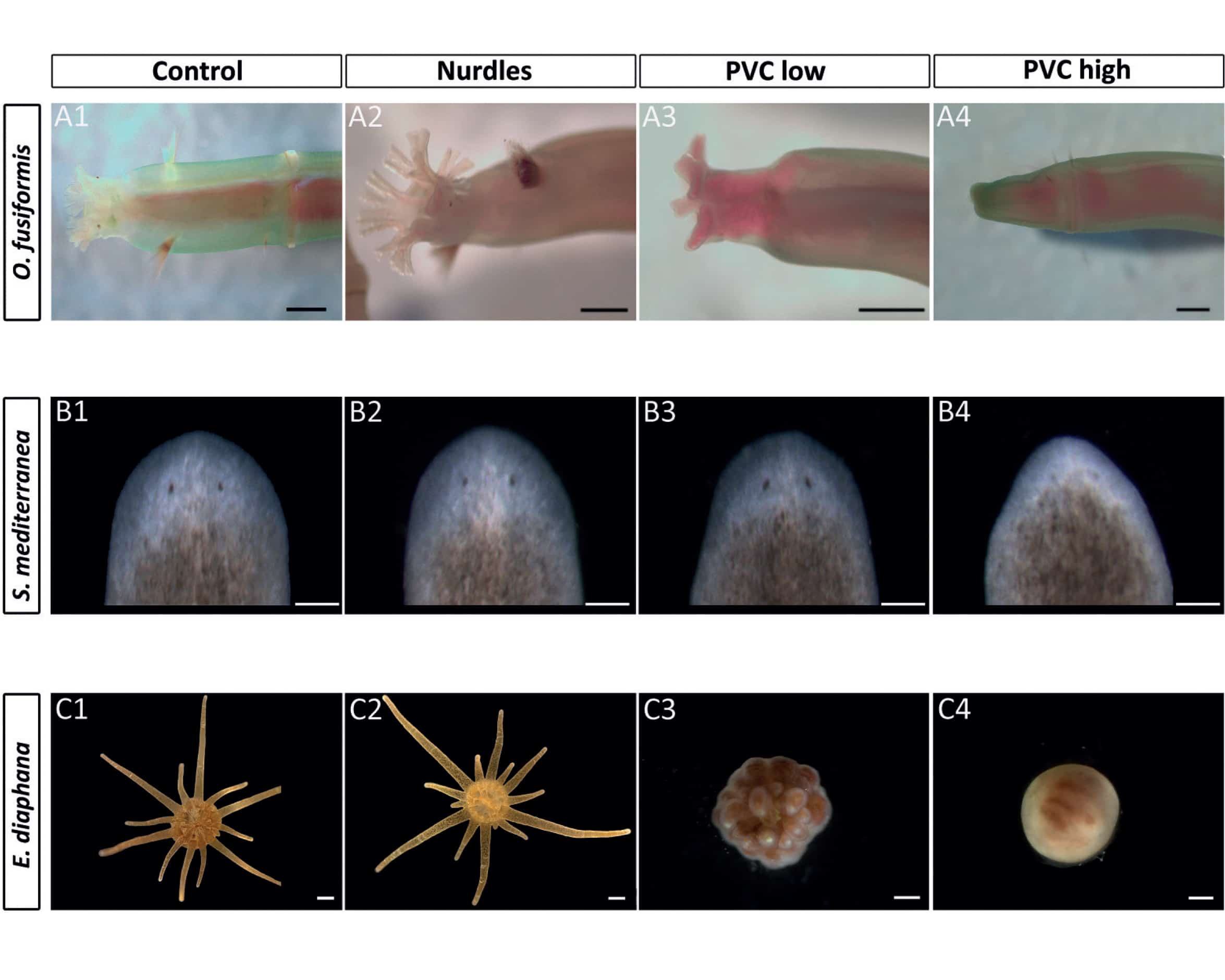An international team led by the Stazione Zoologica Anton Dohrn in Italy and the University of Exeter in the UK conducted a study that revealed detrimental effects of plastic pollution on the embryos of various ocean animals.

The research examined the impact of new PVC pellets, also commonly known as “nurdles,” on the physical development of seven different species representing major groups of ocean animals.
The findings showed that exposure to high concentrations of PVC pellets hindered the healthy development of all seven species studied. The main process affected was morphogenesis, the process by which organisms develop their shape, leading to malformed embryos incapable of survival. Embryos exposed to elevated levels of PVC pellets displayed various abnormalities, including the failure to form shells, and halted development after initial rounds of cell division, rendering them non-viable.
Images: Getty/Shutterstock/Illustration






